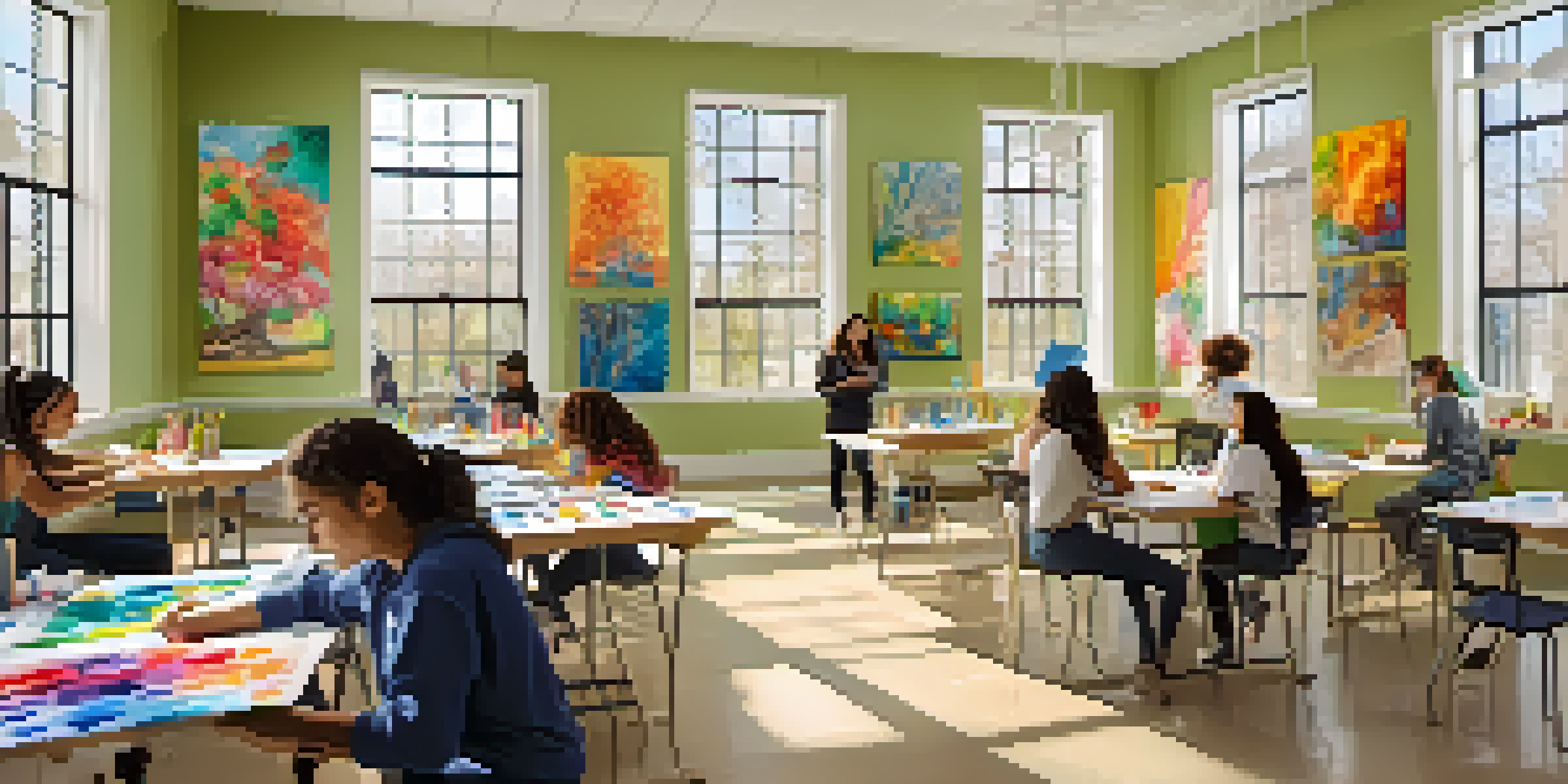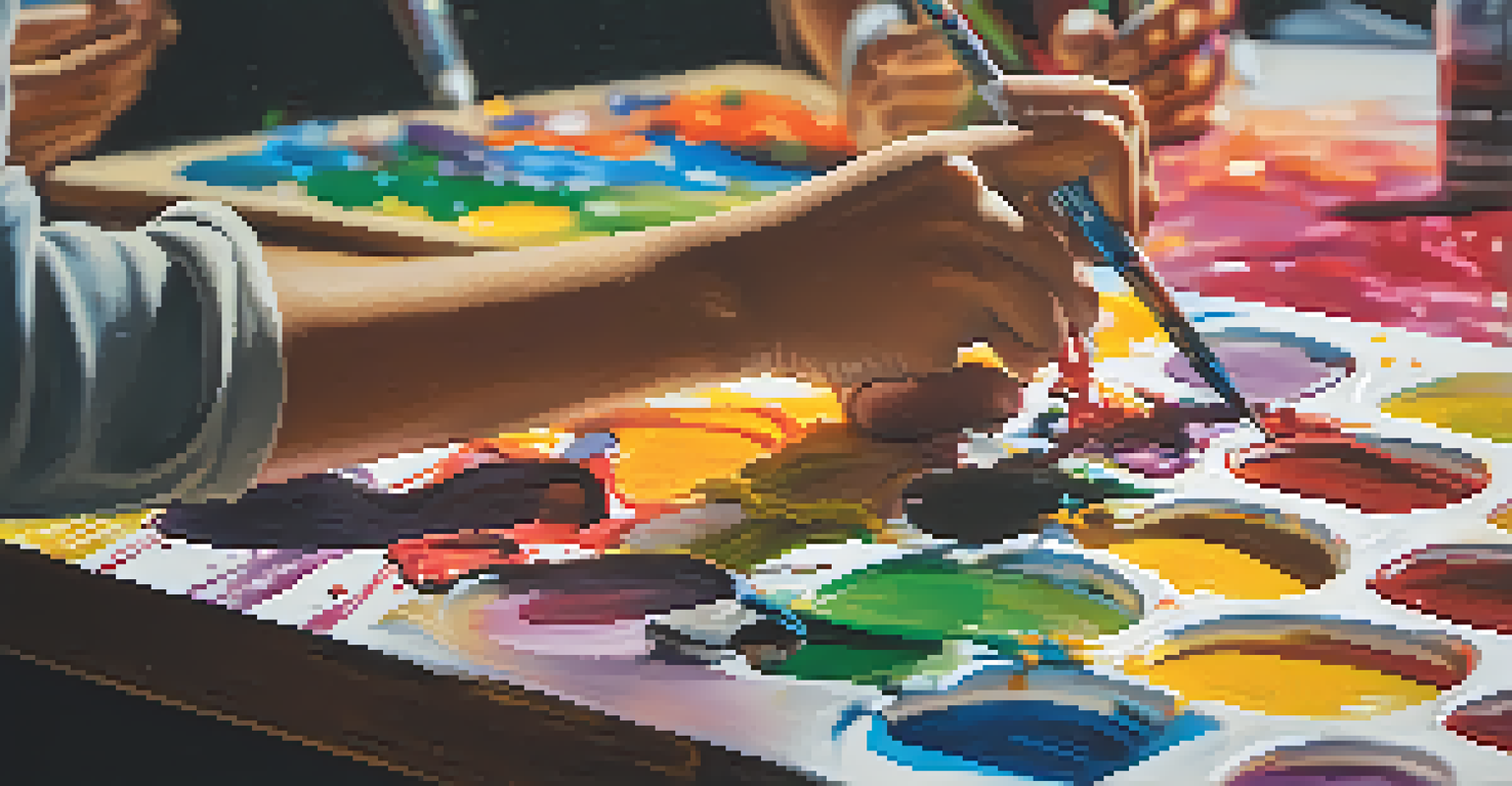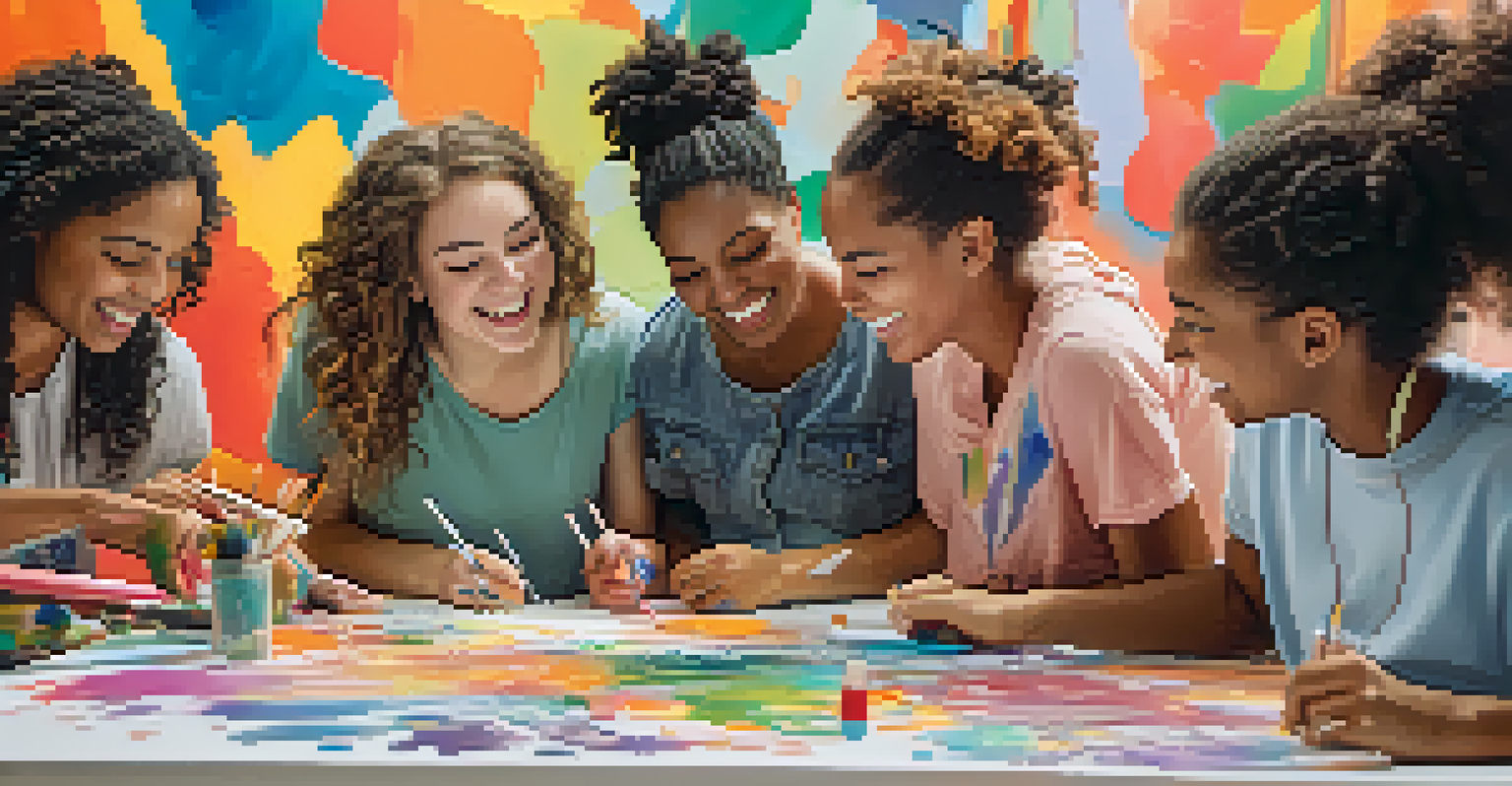The Impact of Art Therapy on Student Learning and Development

Understanding Art Therapy and Its Principles
Art therapy is a therapeutic practice that uses creative processes to help individuals express themselves and explore their emotions. In the context of education, it provides students with a unique outlet to communicate feelings that they might find difficult to verbalize. By engaging in artistic activities, students can tap into their creativity, leading to a deeper understanding of themselves.
Art can be a powerful means of self-expression and a way to communicate feelings that may be difficult to articulate.
This therapeutic approach is rooted in psychology and the arts, aiming to promote mental wellness and personal development. Unlike traditional forms of therapy, art therapy focuses on the process of creation rather than the final product. This distinction allows students to feel less pressure and more freedom to explore their thoughts and feelings through art.
Through various mediums such as painting, drawing, or sculpting, students can reflect on their experiences and emotions. This reflective practice can foster a greater sense of self-awareness, which is crucial for academic and personal growth. Ultimately, art therapy can be a transformative experience for students, providing them with tools to navigate their learning journeys.
Boosting Emotional Intelligence Through Art
Emotional intelligence (EI) is the ability to recognize and manage one’s own emotions while also understanding the emotions of others. Art therapy plays a significant role in enhancing EI among students, as it encourages them to express and process their feelings creatively. This can lead to improved empathy and social skills, essential components in a collaborative learning environment.

By engaging in art therapy, students learn to articulate their emotions and relate to the feelings of their peers. For instance, when students create art that represents their feelings, they often share their thoughts during group sessions. This sharing not only fosters a supportive community but also helps students develop a language for discussing their emotions—a vital skill in both academic and personal contexts.
Art Therapy Boosts Emotional Intelligence
Through creative expression, art therapy helps students articulate their emotions and enhances empathy and social skills.
Moreover, as students navigate the ups and downs of the creative process, they learn to cope with frustration and celebrate successes. This emotional resilience can translate into the classroom, where students are better equipped to handle stress and challenges. In this way, art therapy nurtures emotional intelligence, leading to improved academic performance and interpersonal relationships.
Enhancing Cognitive Skills Through Creative Expression
Art therapy isn't just about emotional expression; it also significantly enhances cognitive skills. Engaging in creative activities helps students improve their problem-solving abilities and critical thinking. For example, when students work on an art project, they must make decisions about colors, designs, and materials, which encourages them to think creatively and strategically.
Creative expression is a way of understanding ourselves and our place in the world.
Additionally, the process of creating art can boost memory retention and comprehension. Studies have shown that students who participate in art-related activities tend to perform better academically. This improvement can be attributed to the way art stimulates various areas of the brain, enhancing overall cognitive function and learning.
Furthermore, art therapy encourages patience and focus, as students learn to invest time and effort into their creative work. This sustained attention can lead to better concentration in academic tasks, as students become accustomed to dedicating time to their projects. Overall, the cognitive benefits of art therapy can significantly enhance students’ learning experiences.
Fostering Social Connections and Teamwork
Art therapy can also serve as a powerful tool for fostering social connections among students. Group art projects encourage collaboration, communication, and teamwork, helping students build relationships with their peers. When students work together on a creative endeavor, they learn to appreciate diverse perspectives and ideas, enriching their social interactions.
This collaborative environment can be especially beneficial for students who may struggle with social anxiety or communication difficulties. Art provides a non-verbal means of interaction, allowing students to connect with one another without the pressure of traditional conversation. As they create together, students can bond over shared experiences and emotions, strengthening their social ties.
Enhances Cognitive Skills and Focus
Engaging in art therapy improves problem-solving, memory retention, and concentration, leading to better academic performance.
Moreover, participating in group art therapy sessions can cultivate a sense of belonging and community within the classroom. Students who feel connected to their peers are more likely to engage in classroom activities and support one another emotionally. In this way, art therapy contributes to a positive and inclusive learning environment.
Reducing Stress and Anxiety in Academic Settings
The pressures of academic life can lead to significant stress and anxiety among students. Art therapy provides a constructive outlet for these feelings, allowing students to decompress and express their emotions creatively. Engaging in art can be a form of mindfulness, helping students focus on the present moment and reduce feelings of overwhelm.
For many students, creating art can be a meditative experience. The repetitive motions of drawing or painting can calm the mind and provide a break from academic pressures. This sense of relaxation can lead to improved concentration and a more positive outlook on learning.
Additionally, art therapy encourages students to confront and process their anxieties rather than suppress them. By expressing their feelings through creative means, students can gain a better understanding of their stressors. This awareness can empower them to develop coping strategies that can be applied in academic settings, leading to improved mental health.
Promoting Self-Expression and Identity Exploration
Art therapy allows students to explore their identities and express their individuality in a safe and supportive environment. Adolescence is often a time of self-discovery, and creative expression can be a vital part of this journey. Through art, students can communicate their thoughts, beliefs, and experiences, helping them understand who they are.
In many cases, students may feel more comfortable expressing complex emotions through art rather than words. This non-verbal form of communication can lead to profound insights about their identities and personal experiences. For instance, a student might create a piece reflecting their cultural background, which can foster a sense of pride and belonging.
Fosters Social Connections and Community
Group art projects facilitate collaboration and communication, helping students build relationships and a sense of belonging.
Moreover, art therapy can empower students to embrace their uniqueness and celebrate their differences. By sharing their creations with peers, students can foster acceptance and understanding, promoting a more inclusive environment. This exploration of identity through art ultimately contributes to personal growth and self-acceptance.
Integrating Art Therapy into Educational Programs
To fully harness the benefits of art therapy, educational institutions are increasingly integrating it into their programs. This can take various forms, from dedicated art therapy sessions to incorporating creative projects into the curriculum. By making art therapy accessible, schools can provide students with valuable resources for emotional and cognitive development.
Collaboration between educators and trained art therapists can enhance the effectiveness of these programs. Educators can learn how to incorporate artistic elements into their teaching methods, creating a more engaging learning environment. This interdisciplinary approach can help students connect different subjects through creativity.

Additionally, schools can organize workshops and community events that highlight the importance of art therapy. By raising awareness and promoting the benefits of creative expression, institutions can foster a culture of support and understanding. Ultimately, integrating art therapy into educational programs can lead to healthier, more well-rounded students.
Conclusion: The Lasting Benefits of Art Therapy in Education
In conclusion, art therapy has a profound impact on student learning and development. Its benefits extend beyond emotional expression, enhancing cognitive skills, fostering social connections, and promoting self-awareness. By providing students with a creative outlet, art therapy empowers them to navigate the complexities of academic life with resilience and confidence.
As schools continue to recognize the importance of mental health and emotional well-being, art therapy will play a vital role in creating supportive learning environments. The integration of art therapy into educational programs can lead to more engaged, empathetic, and well-rounded students. Ultimately, the skills and insights gained through art therapy can last a lifetime.
By embracing the transformative power of art therapy, educators can help students thrive academically and personally. The journey of self-discovery and emotional growth that students embark on through art is invaluable, shaping their futures in profound and meaningful ways.